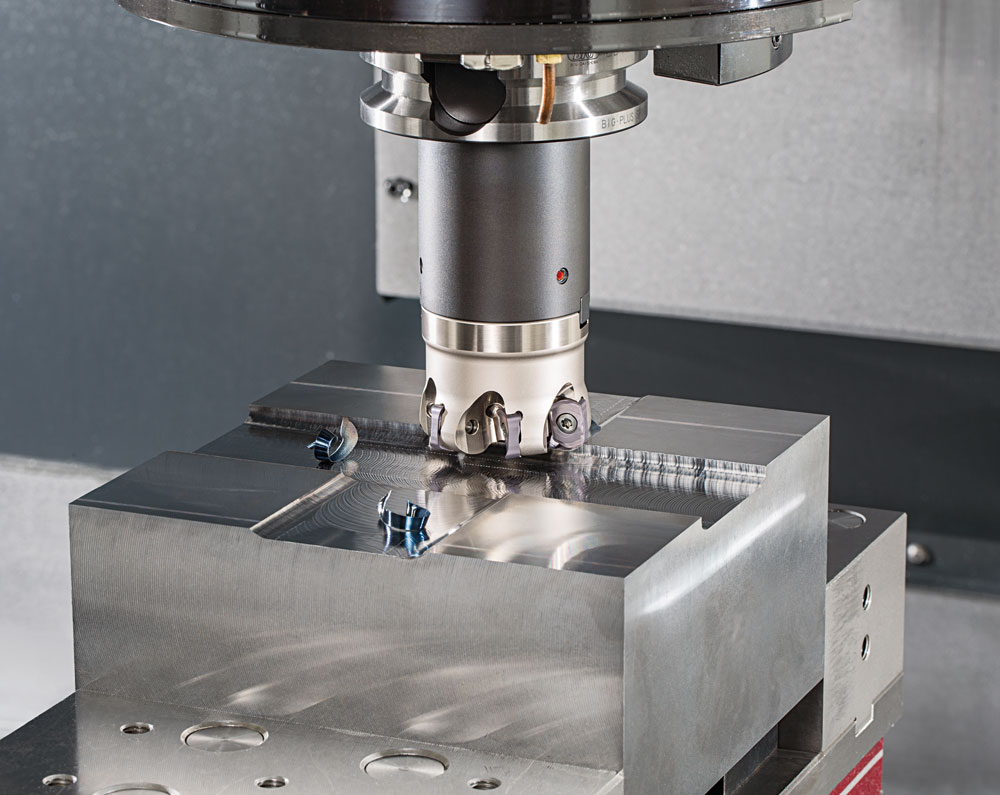There are lots of machining processes available, with each offering unique benefits and side milling surely ranks among the best. This technique is widely used in CNC machining for creating flat surfaces, grooves, slots, and contours. Side milling plays a crucial role in producing precision components with tight tolerances and high surface finishes. This article introduce the principles of side milling, its applications and advantages.
What is Side Milling?
It is commonly performed on CNC milling machines, where the cutting tool moves along multiple axes to create complex geometries, the rotation cutting direction of the milling cutter is perpendicular to the feed direction of the workpiece, and material is removed through the rotation of the tool and the movement of the workpiece. Side milling is commonly used for machining shapes such as flat surfaces, grooves, and curved surfaces.
Types of side milling cutters
Staggered tooth milling cutter
These tools have well spaced side cutting teeth on the tool. Uneven spacing between teeth helps to minimize cutting forces during operation. Uneven arrangement of teeth helps reduce the load on each tooth. In addition, this helps to achieve effective results when cutting chips.
The staggered tooth milling cutter is very suitable for removing heavy materials or machining wider grooves. Due to their staggered teeth, they can reduce vibration and extend the service life of the tool. Interlocking tooth milling cutters can help you efficiently cut hard materials and ensure smoother operation as they can evenly distribute cutting forces.
Ordinary milling cutter
The design of ordinary milling cutters is completely different. They have a uniform tooth arrangement around the tool, which makes them suitable for machining flat or flat surfaces. Due to the uniform spacing between teeth, they can provide smooth and consistent results. You can use regular milling cutters in applications where precision and smooth surface treatment are important.
Ordinary milling cutters are made of different materials such as hard alloy and high-speed steel. Hard alloy milling cutters are durable and have the ability to withstand high temperatures. High speed steel milling cutters are widely used because they can be applied to different types of materials. However, you can use these milling cutters in high-speed or heavy-duty operations.
The staggered tooth milling cutter and ordinary milling cutter can provide excellent results when used. However, the choice of milling cutter to be used depends on your application requirements. Based on their advantages and disadvantages, each of these milling cutters performs well in different applications.
How to ensure machining accuracy and surface quality?
In side milling, ensuring machining accuracy and surface quality requires comprehensive consideration of multiple factors. The following are some key measures:
1. Tool selection and installation
Tool accuracy: Choosing high-precision tools directly affects machining accuracy in terms of dimensional accuracy, shape accuracy, and cutting edge quality. For example, the diameter tolerance of the milling cutter should be controlled within ± 0.01mm, and the surface roughness Ra value of the cutting edge should not exceed 0.8 μ m.
Tool installation: The tool installation should be firm, avoiding eccentricity or looseness. After installation, it is necessary to check the radial runout and axial displacement of the tool. The radial runout should not exceed 0.01mm, and the axial displacement should not exceed 0.005mm.
2. Workpiece clamping and positioning
Fixture selection: Choose suitable fixtures based on the shape of the workpiece and processing requirements, such as flat pliers, pressure plates, or customized fixtures. The positioning surface accuracy of the fixture should be high to avoid machining errors caused by fixture problems.
Clamping accuracy: Use a dial gauge or micrometer to align the workpiece, ensuring that the workpiece reference plane is aligned with the machine coordinate axis. For workpieces that have been clamped multiple times, positioning pins or keys need to be set to ensure consistency in the clamping position.
3. Optimization of cutting parameters
Cutting speed and feed rate: Reasonably set the cutting speed and feed rate to avoid excessive or insufficient parameters that may cause increased tool wear or poor surface quality during machining. For example, when processing steel parts, the cutting speed can be set to 100-200m/min and the feed rate to 0.1-0.3mm/z.
Cutting depth and width: During initial machining, a larger cutting amount can be used, while during precision machining, the cutting amount should be reduced to improve surface quality and machining accuracy.
4. Processing process monitoring
Vibration control: Maintain the rigidity and stability of the machine tool, and avoid vibration during the machining process. If necessary, vibration reduction devices can be used or cutting parameters can be adjusted to reduce vibration.
Real time monitoring and adjustment: closely observe the operation status of the machine tool during the machining process, regularly check the machining dimensions, and adjust the tool compensation parameters in a timely manner.

5. Use of coolant
The importance of coolant: Using sufficient coolant can lower cutting temperature, reduce tool wear, and remove chips to avoid surface burns or deformation.
6. Processing path and technology
Reasonably plan the machining path: Choose a suitable machining path during programming, such as contour cutting, spiral cutting, etc., to reduce the impact of the tool on the workpiece surface.
Staged machining: For workpieces with high precision requirements, a multi-stage machining method of rough milling, semi precision milling, and precision milling can be used to gradually improve machining accuracy.
Applications of Side Milling
1. Slotting and Grooving
Side milling is used to create precise slots and grooves in workpieces. It allows for accurate control over width, depth, and alignment.
2. Contouring and Profiling
Complex contours and profiles are machined using side milling, where the cutter follows the workpiece’s shape. This is particularly useful in mold making and aerospace part manufacturing.
3. Surface Finishing
Side milling is an effective method for producing high-quality surface finishes. The smooth cutting action of climb milling helps reduce tool marks and improve the final appearance.
4. Keyway and Shoulder Milling
Side milling is ideal for machining keyways and shoulders with precision. It ensures tight dimensional accuracy and consistent surface quality.
Common Failures in Side Milling and Their Prevention Measures
Common Failures and Causes
- Machining Vibration
Causes: Improper cutting parameters (e.g., excessive cutting depth, high feed rate), insufficient tool rigidity, loose workpiece clamping, insufficient machine rigidity, or poor lubrication.
Manifestations: Wavy or vibratory patterns on the machined surface, reduced machining accuracy.
- Poor Surface Quality
Causes: Severe tool wear, improper cutting parameters (e.g., too low or too high cutting speed), insufficient or contaminated coolant.
Manifestations: Excessive surface roughness, tool marks, or burn marks on the machined surface.
- Unstable Machining Dimensions
Causes: Wear of machine guideways or lead screws, excessive backlash in the feed system, or loosening of clamping devices.
Manifestations: Large dimensional deviations, poor repeatability.
- Spindle Abnormalities
Causes: Bearing wear, poor lubrication, or motor failure.
Manifestations: Spindle overheating, excessive noise, or failure to operate normally.
- Program Errors or Operational Mistakes
Causes: Incorrect machining program, failure to follow operating procedures by the operator.
Manifestations: Tool collision, incorrect machining path.
Prevention Measures
- Optimize Cutting Parameters
Reasonably set cutting speed, feed rate, and cutting depth to avoid excessive cutting forces.
- Select Suitable Tools and Fixtures
Use tools with high rigidity and precision, and ensure the workpiece is securely clamped.
- Enhance Machine Maintenance
Regularly inspect and replace worn mechanical components, such as lead screws and bearings, and ensure proper lubrication of machine guideways and spindles.
- Rationally Set Machining Paths
Optimize tool paths to avoid unnecessary impacts during machining.
- Ensure Adequate and Clean Coolant
Regularly check the coolant supply and promptly replace contaminated coolant.
- Strengthen Operator Training
Improve the operator’s proficiency with the equipment to ensure the program is correct and error-free.
Conclusion
Side milling is a versatile and precise machining technique essential for producing high-quality components in various industries. By selecting the right tools, optimizing cutting parameters, and following best practices, manufacturers can achieve superior surface finishes and dimensional accuracy. Understanding the nuances of side milling allows machinists to overcome challenges and maximize productivity in CNC machining operations.

